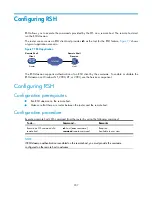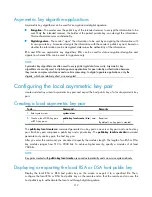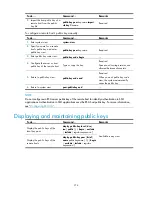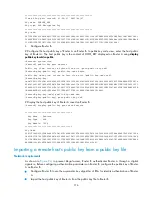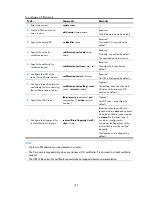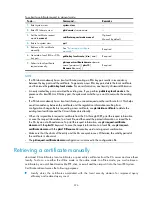
220
PKI architecture
A PKI system consists of entities, a CA, an RA, and a PKI repository, as shown in
Figure 85
PKI architecture
Entity
An entity is an end user of PKI products or services, such as a person, an organization, a device like a
router or a switch, or a process running on a computer.
CA
A CA is a trusted authority responsible for issuing and managing digital certificates. A CA issues
certificates, specifies the validity periods of certificates, and revokes certificates as needed by publishing
CRLs.
RA
An RA is an extended part of a CA or an independent authority. An RA can implement functions
including identity authentication, CRL management, key pair generation, and key pair backup. The PKI
standard recommends that an independent RA be used for registration management to achieve higher
security of application systems.
PKI repository
A PKI repository can be an LDAP server or a common database. It stores and manages information like
certificate requests, certificates, keys, CRLs, and logs when it provides a simple query function.
LDAP is a protocol for accessing and managing PKI information. An LDAP server stores user information
and digital certificates from the RA server and provides directory navigation service. From an LDAP
server, an entity can retrieve local and CA certificates of its own as well as certificates of other entities.
PKI applications
The PKI technology can satisfy the security requirements of online transactions. As an infrastructure, PKI
has a wide range of applications. Here are some application examples.


